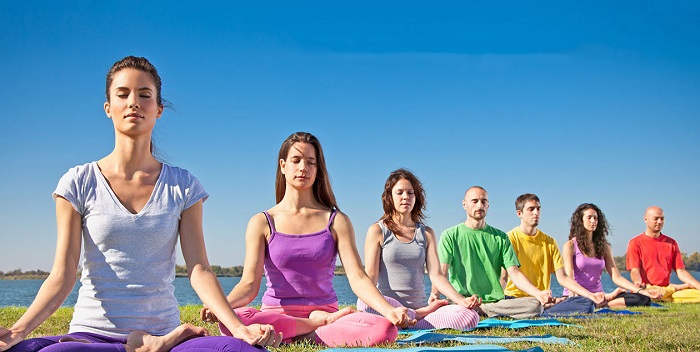The Ultimate Goal of Yoga
On the mat, the serious yoga practitioner is the embodiment of focus, discipline, and unwavering concentration. He or she is devoted to the perfection of the asana (poses) and he or she challenges mind and body to achieve a ‘higher state of being’.

On the mat, the serious yoga practitioner is the embodiment of focus, discipline, and unwavering concentration. He or she is devoted to the perfection of the asana (poses) and he or she challenges mind and body to achieve a ‘higher state of being’. Sure, this sounds legitimate and rather impressive, but what does it really mean? What is the ultimate goal of yoga?
This is a complicated question. Arguably, each practitioner has a goal (or goals) individual to him or her. However, yoga has been practiced in various forms for hundreds of years all over the world. There must be a grand design, an ultimate goal…
There is. It is called: moksha.
Moksha is the liberation from worldly suffering and samsara (the cycle of birth and death through reincarnation). This release from sequential lives on earth leads to an enlightened relationship with a creator. Different schools of yoga have differing beliefs about this enlightened relationship.
For example, according to Hindu monist schools (such as Shaivism and Jainism), at the point of moksha, there is a realization of identity with the Supreme Brahman. For bhakti schools of Vaishnavism, the realization of identity is made with Vishnu.
However, in all schools of yoga, the goal of the practitioner is the attainment of perfect tranquility and spiritual insight while meditating on Brahman (the Hindu concept of divinity). It is this state that will lead to moksha and eternal peace.
For serious practitioners of yoga, moksha is worth more than just sweat on the mat and a few classes every week. It requires an austere, self-disciplined life based around the Five Principles of Yoga (proper relaxation, proper exercise, proper breathing, proper diet, and positive thinking and meditation). The rules and guidelines of this self-disciplined life are called yama and niyama. Yama (social ethics) and niyama (personal practices) are the first steps to building a conscious relationship with the world and with yourself. They are considered the first part of the Eightfold Yoga Path of Patanjali (individual development of the body, mind, and soul). Many contemporary yogis and yoga instructors simply refer to them as the " do's and don't's " of being human.
The disciplined life is guided by the understanding that many of life’s problems are self-imposed limitations. Poor habits, frivolous living, and unfounded beliefs all contribute to a confusing, murky world. Yama and niyama help practitioners prioritize their inner and outer worlds so that balance and proportion are restored to all aspects of life.
Some yoga masters have described the ultimate goal of yoga as being ‘consciously conscious’—meaning that the sense of a ‘personal self’ and the sense of ‘unlimited spirit and consciousness’ are united. They consider the union between the practitioners’ various parts into a whole as the most important aspect of yoga. It is reflected in the asana where all the ‘parts’ of the practitioner’s body are in sync with one another. They are all situated in the most effective way for maximum circulation and meditation. Every part has a place in the whole.
Moksha is a noble ambition that has been shared by billions of people throughout history and the yama and niyama still guide the lives of thousands of yoga practitioners today. Although this is historically considered yoga’s ultimate goal, yoga is a highly personal endeavor with many rewards. So, perhaps the question needs re-phrasing: What is YOUR ultimate goal of yoga?
Tags:- Ultimate Goal of Yoga, Purpose of Yoga, goals of yoga, yoga meditation, Aims of Yoga, Yoga, meditation, Real Goal of Yoga, Yoga Practice, Goal of Yoga.